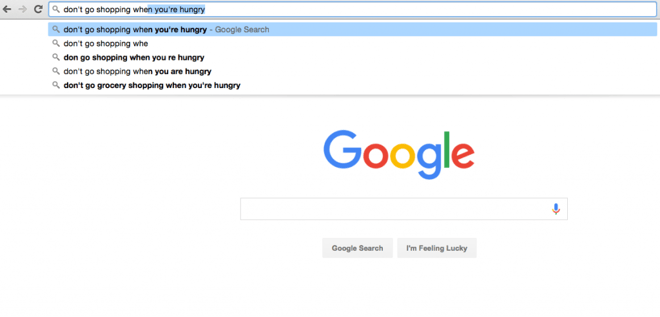
What happens when you go shopping when you are hungry? You end up buying more than you wanted and getting things that you usually wouldn't. So you are still hungry, but now you also have less money. What does this have to do with website optimization? If you have a website and you decide to start re-develop it in a hurry, you will most likely end up paying way more and receiving significantly less than what you actually need. So here is our short guide to developing a demand generation optimised website.

Design, search engine optimization, social media and content are each proven performers when separately implemented. However, when implemented as part of a synchronised, methodical strategy, they can result in significantly reduced costs, increased sales and improved ROI.
What is the cost of SEO optimisation? It all depends on the type of service you get.
Here are some of the most common options:
Project-based pricing: you can't be prepared enough for the price of any agency, so always ensure that you ask for a detailed proposal as cost and services offered vary greatly. The price will depend on the project, but usually it will cost something between €900 to €26,000.
Monthly retainer: If you want to use the services of an agency on a regular basis, you will likely need to spend around €650 - 4,500 per month. A small agency with a limited range of services might be enough for you. Keep in mind that most businesses pay between €2,500 and €4,000 for a monthly retainer.
Contract services at fixed prices: with this option you pay for what you need. Typical services are SEO copywriting (charged by word), content audits, link profile audits and social media site setup.
Hourly consulting rate: €90- 260 /hr. Individuals and agencies both charge in this range.
Here is an outline of the major expenses you will have when optimizing your website for demand generation.
Creating a strategy based on the buyer's persona. This will include all of your content assets, blogging strategy and planning, lead nurturing. After scrutinizing your website, the strategy should address all pain points and have a solid plan how to optimize. This usually costs between €5,200 and €8,900. To change and update the site structure, you will need from €3,500 to €7,000, depending on the size of your website.
So you've updated your website. Your next step is to let the prospects know you exist. To get relevant traffic and conversions, you will need qualitative SEO: buyer personas, topics relevant to them, research and a SEO-optimization plan, which run between €3,500 and €10,000.
But before you go and pick your SEO company and pay them their fee, think about what you want from them. In order to secure the systematic channeling of traffic and customer conversion, you will need to synchronize the tactics below.

Hosting
I'll say it straight - go trying to save on hosting. We can't stress enough how important is to work with a reputable hosting company. Your host won't just ensure that the site and pages function correctly. It will also keep it safe from hackers.
Hub architecture
There are three levels that feed into each other from the SEO foundation: social media, blog and website. Your end goal is to systematically and efficiently drive traffic from search and social media to specific conversion points: landing pages. Let your content, social and website be the spokes and the conversion landing page be the hub.
Unload Extra Assets
Supporting files such as scripts, images, CSS and static files, don't need to be sitting on the same server as your pages themselves. Try placing them on a separate server such as the fast CDN servers provided by Amazon and others.. User experience will be immensely improved.
Address Your CSS
In order to ensure a modern look and feel to your website you need CSS codes. However, if not done properly, this code can destroy the user experience and site function. Look into CSS selectors for cleaner markup; try to use a shorter code when related to same styles; and read about CSS Sprites. They are indispensable for sites with a lot of visuals and large content assets, since they reduce the number of HTTP requests during page load. Thus, your page loads faster.

Optimize WordPress
If WordPress is your choice for a content management platform, consider ways to optimize digital elements. The platform does allow web masters to install plug-ins and host e-commerce elements. You can also use WP-Cache to make your site faster and more responsive. Another useful plugin is Yoast SEO (formerly known as WordPress SEO by Yoast). It has a lot of valuable features: from a snippet preview and page analysis functionality that helps you optimize your pages content, images titles, to meta descriptions and more to XML sitemaps.
Keyword research
One of the most important things you should look into when optimizing your website is the keyword research. It is one of the most valuable and high return activities in the search marketing field. It will give you useful information not only about what people are looking for, but also what type of people are looking for it. The essence of inbound marketing is delivering the right message at the right time to the right person. Keyword: right. With the right keywords, you will be able to anticipate shifts in demand, respond to your audience and market, supply a demand. Keep in mind that this is not a one time thing: ongoing keyword optimization is necessary. You need to continuously perform keyword analysis. Look into SEO, PPC and Social media to make your website keyword-friendly.
Here is a quick check list to help you remember what we've covered:
- Figure out your current state of lead generation.
- Optimize each step of the lead generation process:
- Calls-to-Action;
- Landing Pages;
- Thank-You Pages;
- Personalize your calls-to-action.
- Test, test, test.
- Nurture your leads.
Do you already have an action plan? Let us know if you need help to boost your website to be the lead capturing tool it should be.
Note: The prices quoted in this article have been referenced from here and here.


